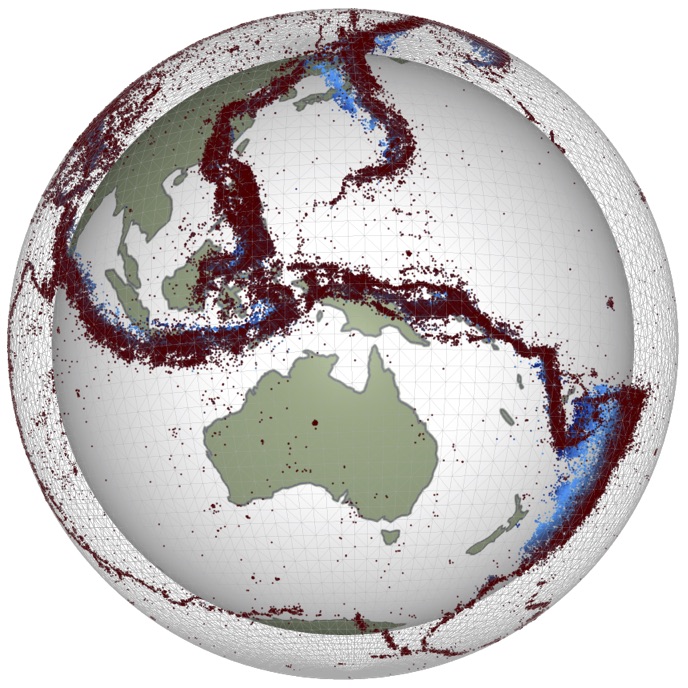Poisson Equation (generic)#
First we show how this works using the generic class and then the minor differences for
the Poisson class
Generic scalar solver class#
# to fix trame issue
import nest_asyncio
nest_asyncio.apply()
import underworld3 as uw
import numpy as np
import sympy
from underworld3.meshing import UnstructuredSimplexBox
mesh = UnstructuredSimplexBox(
minCoords=(0.0, 0.0), maxCoords=(1.0, 1.0), regular=False, cellSize=1.0 / 32
)
t_soln = uw.discretisation.MeshVariable("T", mesh, 1, degree=1)
t_soln0 = uw.discretisation.MeshVariable("T0", mesh, 1, degree=1)
poisson0 = uw.systems.SNES_Scalar(mesh, u_Field=t_soln0)
poisson0.F0 = 0.0
poisson0.F1 = 1.0 * poisson0.Unknowns.L
poisson0.add_dirichlet_bc(1.0, "Bottom", 0)
poisson0.add_dirichlet_bc(0.0, "Top", 0)
poisson0.constitutive_model = uw.constitutive_models.DiffusionModel
poisson0.constitutive_model.Parameters.diffusivity = 1.0
poisson0.solve()
Poisson Class#
Here is the other way to solve this, using the Poisson class which does not much
more than add a template for the flux term.
# Create Poisson object
poisson = uw.systems.Poisson(mesh, u_Field=t_soln)
poisson.constitutive_model = uw.constitutive_models.DiffusionModel
poisson.constitutive_model.Parameters.diffusivity = 1.0
poisson.f = 0.0
poisson.add_dirichlet_bc(1.0, "Bottom", 0)
poisson.add_dirichlet_bc(0.0, "Top", 0)
# Solve time
poisson.solve()
poisson.F0
sympy.Matrix((0,))
# Check the flux term
display(poisson._L)
# This is the internal build of the flux term
display(poisson._f1)
poisson.Unknowns.L
poisson.u.sym.jacobian(poisson.Unknowns.L)
poisson._f1.jacobian(poisson.Unknowns.L)
Validation#
# Check. Construct simple linear which is solution for
# above config. Exclude boundaries from mesh data.
import numpy as np
with mesh.access():
mesh_numerical_soln = uw.function.evaluate(poisson.u.fn, mesh.data)
mesh_analytic_soln = uw.function.evaluate(1.0 - mesh.N.y, mesh.data)
if not np.allclose(mesh_analytic_soln, mesh_numerical_soln, rtol=0.001, atol=0.01):
raise RuntimeError("Unexpected values encountered.")
from mpi4py import MPI
if MPI.COMM_WORLD.size == 1:
import pyvista as pv
import underworld3.visualisation as vis
pvmesh = vis.mesh_to_pv_mesh(mesh)
pvmesh.point_data["T"] = mesh_analytic_soln
pvmesh.point_data["T2"] = mesh_numerical_soln
pvmesh.point_data["DT"] = pvmesh.point_data["T"] - pvmesh.point_data["T2"]
pl = pv.Plotter(window_size=(750, 750))
pl.add_mesh(
pvmesh,
cmap="coolwarm",
edge_color="Black",
show_edges=True,
scalars="DT",
use_transparency=False,
opacity=0.5,
)
pl.camera_position = "xy"
pl.show(cpos="xy")

